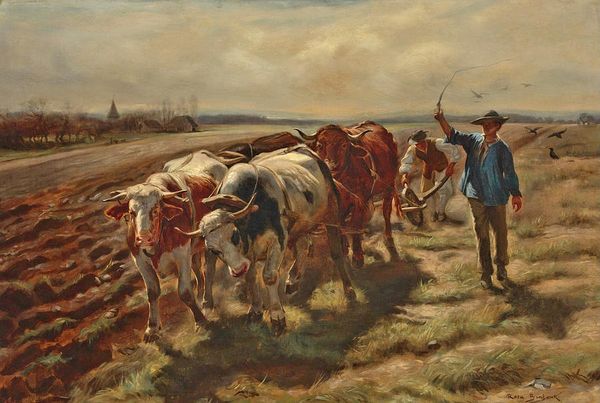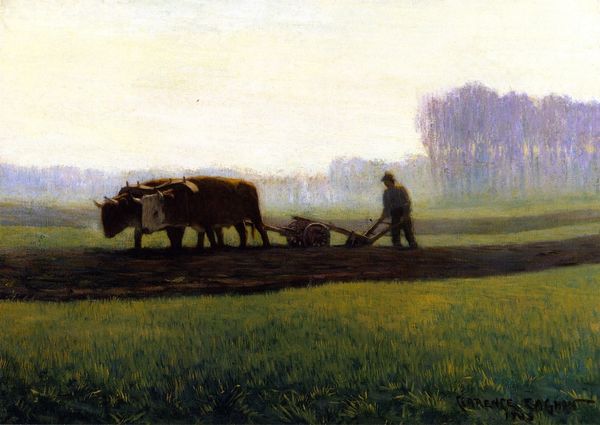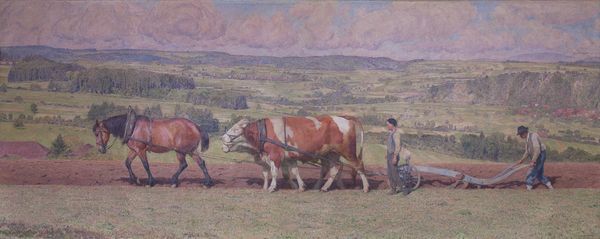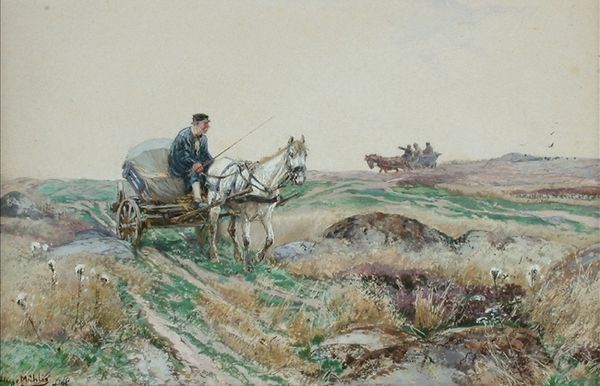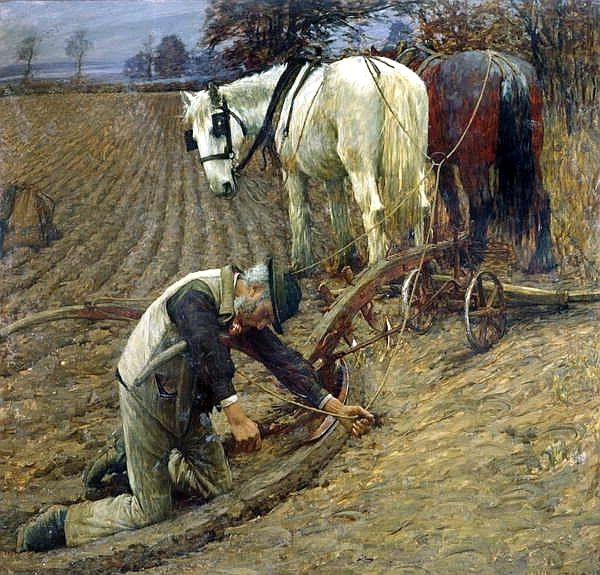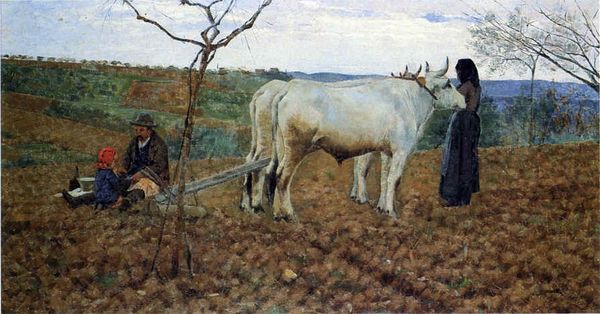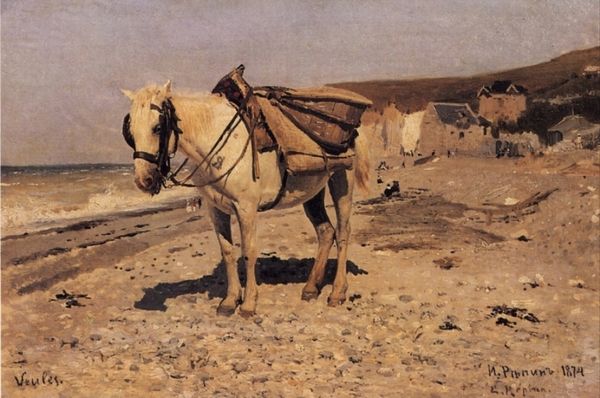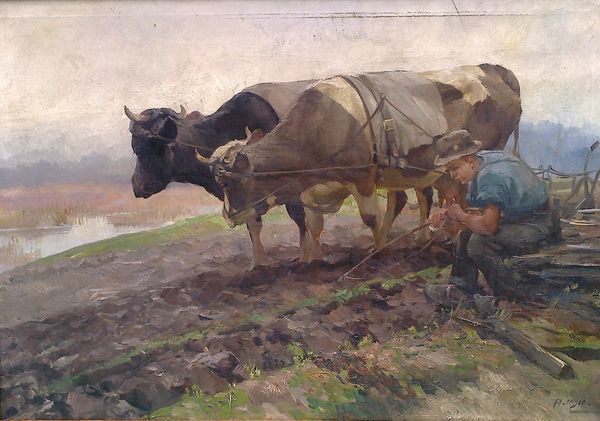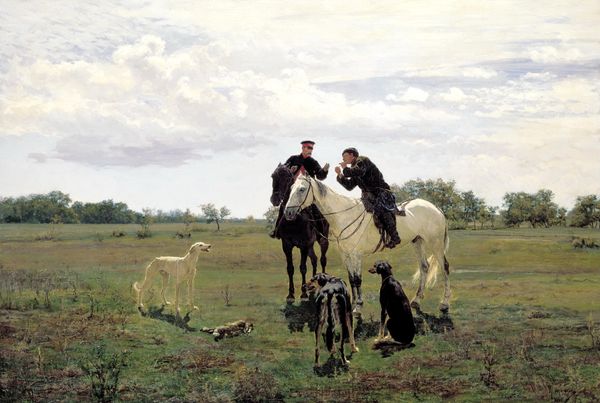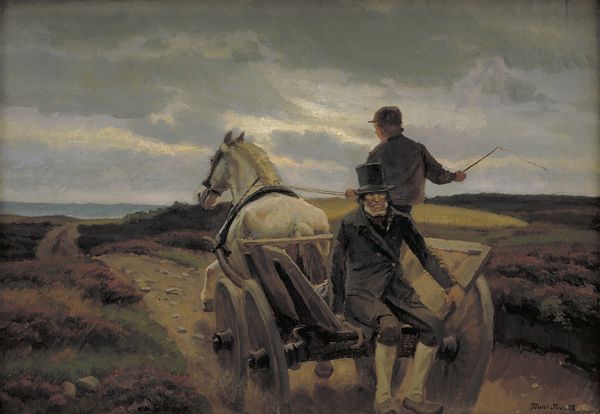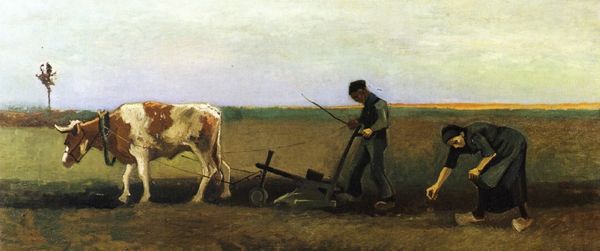
Portrait of Leo Tolstoy as a Ploughman on a Field 1887
0:00
0:00
Dimensions: 28 x 40 cm
Copyright: Public domain
Editor: So, here we have Ilya Repin’s "Portrait of Leo Tolstoy as a Ploughman on a Field," painted in 1887. What strikes me most is how Tolstoy seems almost at one with the landscape. It feels like a statement, but I’m not sure what it’s saying. What do you see in this piece? Curator: Indeed. The cultural memory of the "noble peasant" archetype is strong here. Repin uses Tolstoy, a figure of immense intellectual weight, engaging in manual labor. What symbols do you observe beyond the obvious plough and field? Editor: Well, his simple clothes, the white cap… It's a stark contrast to how we might expect to see a famous author depicted. Almost deliberately unglamorous. Curator: Precisely. The beard, the peasant garb – these are deliberate visual cues that link him to the Russian soil and peasantry. But does it resonate only as mere “realism,” or does it reach back into a deeper symbolic well? Think of the 'return to the land' movement prevalent among Russian intellectuals at the time. Editor: Oh, so it’s less about accurate representation, and more about what those images evoke. It is less about seeing a famous writer but connecting Tolstoy with Russia itself. The horses, for example. Were horses perceived in particular ways? Curator: The horse is a profound symbol in Russian culture – of strength, loyalty, and rural life. How does Repin render them here? Notice their coloring, the way they strain...Are they idealized steeds, or something else? Their color reminds me of Russian icon painting. How are they linked here, and in a dialogue? Editor: They look powerful, but also weary. Working animals, not heroic mounts. So Repin seems to be using these symbols to make a larger point about Tolstoy's own beliefs, or maybe even about Russian identity? I hadn’t considered those deeper cultural connections before. Curator: Precisely. It demonstrates how art can be deeply embedded with collective meanings. It also opens conversations with different visual styles such as those employed in Icon painting to render the divine. Editor: I see now how Repin transforms a simple scene into a powerful statement through these visual symbols. It changes how I see all paintings! Curator: And that's the power of visual language.
Comments
No comments
Be the first to comment and join the conversation on the ultimate creative platform.
